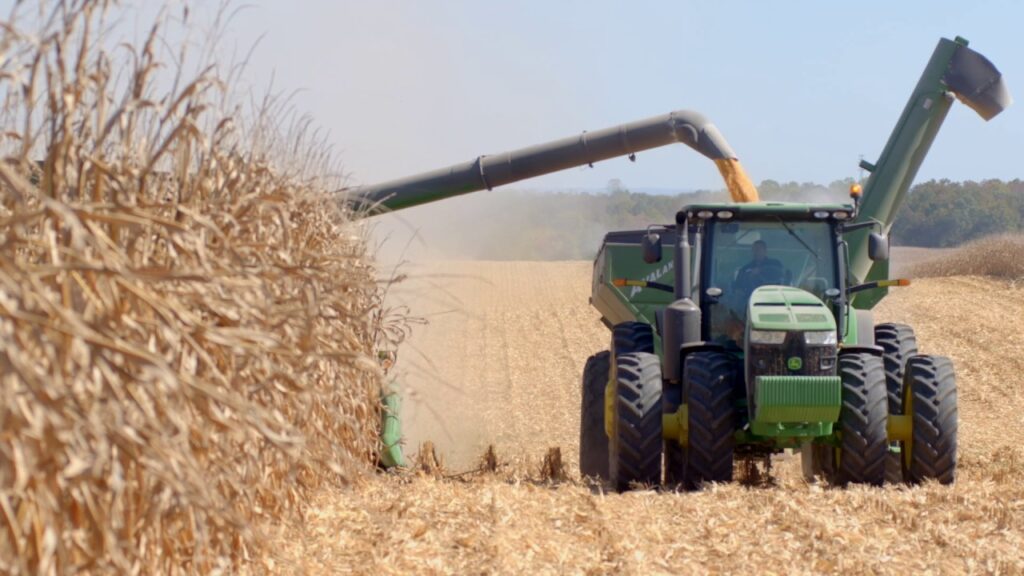Commodity price fluctuations and the
demand for agricultural products are
key market trends that greatly impact Alabama farm valuations. The interplay between high and low prices directly affects farm profitability and financial health, with farmers implementing
risk management strategies to navigate market uncertainties. Additionally, the demand for different agricultural products such as poultry, cotton, soybeans, cattle, and peanuts influences farm revenues and valuations, requiring farmers to align production with
consumer preferences and industry trends. Understanding these trends is essential for informed decision-making in the agricultural sector, where a multitude of factors shape the valuation landscape.
Key Takeaways
- Commodity price fluctuations impact farm valuations significantly.
- Demand for agricultural products influences farm revenues and valuations.
- Land values are determined by factors like location, soil quality, and regulations.
- Government policies and regulations shape the operational landscape and affect valuations.
- Technological advancements in agriculture improve efficiency, productivity, and sustainability.
Commodity Price Fluctuations
Commodity price fluctuations play a significant role in shaping the
financial landscape of Alabama’s agricultural sector. The prices of key commodities such as cotton, soybeans, poultry, and timber can have a substantial impact on the profitability and overall economic health of farms in the state. Alabama’s agricultural sector is particularly sensitive to these fluctuations as many farmers rely heavily on these commodities for their primary source of income.
When commodity prices are high, farmers in Alabama experience
increased revenues and improved profit margins. This allows them to invest in new equipment, expand their operations, and enhance overall efficiency. Conversely, when prices dip, farmers may struggle to cover production costs, service debt, and sustain their livelihoods. The volatility of commodity prices can lead to
financial uncertainty and risk for Alabama farmers, influencing their decision-making processes and long-term planning strategies.
To mitigate the impact of
commodity price fluctuations, many farmers in Alabama engage in
risk management practices such as hedging,
diversification of crops, and participation in government support programs. By carefully monitoring market trends and adjusting their strategies accordingly, farmers aim to navigate the challenges posed by fluctuating commodity prices and maintain
financial stability in an ever-changing agricultural landscape.
Demand for Agricultural Products
The current landscape of Alabama’s agricultural sector is significantly influenced by the demand for a diverse range of agricultural products. The demand for these products plays a crucial role in
shaping market dynamics, farm revenues, and overall farm valuations in the state. Alabama farmers are constantly monitoring market demands to align their production with
consumer preferences and
industry trends.
To highlight the significance of
demand for agricultural products, consider the following table showcasing the top agricultural products in Alabama based on consumer demand:
| Agricultural Product |
Primary Demand Sector |
Market Trends |
| Poultry |
Food Industry |
Increasing |
| Cotton |
Textile Industry |
Stable |
| Soybeans |
Livestock Feed |
Fluctuating |
| Cattle |
Meat Industry |
Strong |
| Peanuts |
Food Industry |
Growing |
Understanding the demand patterns for these key products enables farmers and investors to make informed decisions regarding production levels, pricing strategies, and overall farm management practices. By staying attuned to market demands, Alabama farmers can position themselves for success in a
competitive agricultural landscape.
Impact of Land Values
Analyzing the interplay between market trends and agricultural practices reveals the intricate influence of land values on Alabama farm economics. Land values play a vital role in determining the overall worth and profitability of farms in the state. Several factors contribute to the impact of land values on Alabama farm valuations:
- Location: The proximity to urban areas or transportation hubs can notably increase land values.
- Soil Quality: Land with fertile soil suitable for a variety of crops tends to have higher values.
- Market Demand: The demand for specific types of agricultural land, such as for specialty crops, can drive up land values.
- Infrastructure: Access to essential infrastructure like irrigation systems and roads can enhance land values.
- Land Use Regulations: Zoning laws and restrictions on land use can affect the value of agricultural land in Alabama.
Understanding these factors is essential for farmers, investors, and policymakers to make informed decisions regarding Alabama farm investments.
Government Policies and Regulations
Government policies and regulations greatly shape the operational landscape for agricultural enterprises in Alabama, exerting a significant influence on farm management and economic outcomes. These policies encompass a wide range of areas including environmental regulations, trade policies, labor laws, and agricultural subsidies. Compliance with these regulations is vital for farmers to avoid penalties and maintain
sustainable operations.
To provide a clearer picture of the impact of
government policies and regulations on Alabama farm valuations, let’s consider the following table:
| Aspect |
Description |
Impact |
| Environmental Laws |
Regulations on water usage, waste disposal, etc. |
Increased compliance costs |
| Trade Policies |
Tariffs, trade agreements influencing exports |
Market access and price fluctuations |
| Subsidies |
Government support for certain crops or practices |
Financial stability and risk management |
| Labor Laws |
Regulations on wages, working conditions, etc. |
Labor costs and availability |
| Land Use Restrictions |
Zoning laws, conservation easements |
Limits on expansion and land value changes |
Technological Advancements in Agriculture
How have technological advancements revolutionized agricultural practices in Alabama? Technology has greatly transformed the way farming is conducted in the state, leading to increased efficiency, productivity, and sustainability. Here are five key ways technology has influenced agriculture in Alabama:
- Precision Agriculture: Utilization of GPS, sensors, and data analytics for precise management of resources like water, fertilizers, and pesticides.
- Mechanization: Adoption of advanced machinery such as automated tractors, drones, and robotic systems to streamline various farming tasks.
- Biotechnology: Integration of genetically modified organisms (GMOs) and gene editing techniques to develop crops with enhanced traits like pest resistance and higher yields.
- IoT and Big Data: Harnessing the power of the Internet of Things (IoT) and big data analytics to monitor crops, collect real-time information, and make data-driven decisions.
- Vertical Farming: Implementation of vertical farming techniques, hydroponics, and controlled environment agriculture to maximize production in limited spaces while conserving resources.
Frequently Asked Questions
How Do Natural Disasters, Such as Hurricanes or Droughts, Impact Alabama Farm Valuations?
Natural disasters, like hurricanes or droughts, can profoundly impact Alabama farm valuations by causing crop damage, infrastructure destruction, and financial losses. These events disrupt production, decrease yields, and affect the overall profitability of farms.
What Role Do International Trade Agreements Play in Affecting the Value of Alabama Farms?
International trade agreements can greatly impact the value of Alabama farms by influencing market access, prices, and demand for agricultural products. These agreements can create opportunities or barriers that directly affect farm profitability and overall valuations.
How Does Consumer Behavior and Preferences Influence the Valuation of Alabama Farms?
Consumer behavior and preferences greatly impact Alabama farm valuations. Understanding market demands for organic produce, sustainable practices, and local sourcing can drive farm profitability. Adapting to these trends is essential for long-term success in the agricultural industry.
Are There Any Cultural or Societal Trends That Are Currently Shaping the Agricultural Market in Alabama?
Cultural and societal trends are greatly shaping the agricultural market in Alabama. These trends include an increasing focus on sustainability, locally sourced products, and organic farming practices, which are influencing consumer preferences and driving market demands.
What Impact Do Environmental Concerns, Such as Climate Change or Water Scarcity, Have on the Valuation of Alabama Farms?
Environmental concerns, including climate change and water scarcity, are vital factors impacting Alabama farm valuations. These issues can influence crop yields, water availability for irrigation, and overall land productivity, ultimately affecting the financial worth of farms in the state.
Conclusion
In summary, different
market trends such as commodity price fluctuations, demand for agricultural products, impact of land values,
government policies and regulations, and
technological advancements in agriculture have a substantial influence on Alabama farm valuations. It is essential for farmers and stakeholders in the agricultural industry to closely monitor these trends to make informed decisions and adapt to the changing market dynamics in order to maintain profitability and sustainability in the long term.

